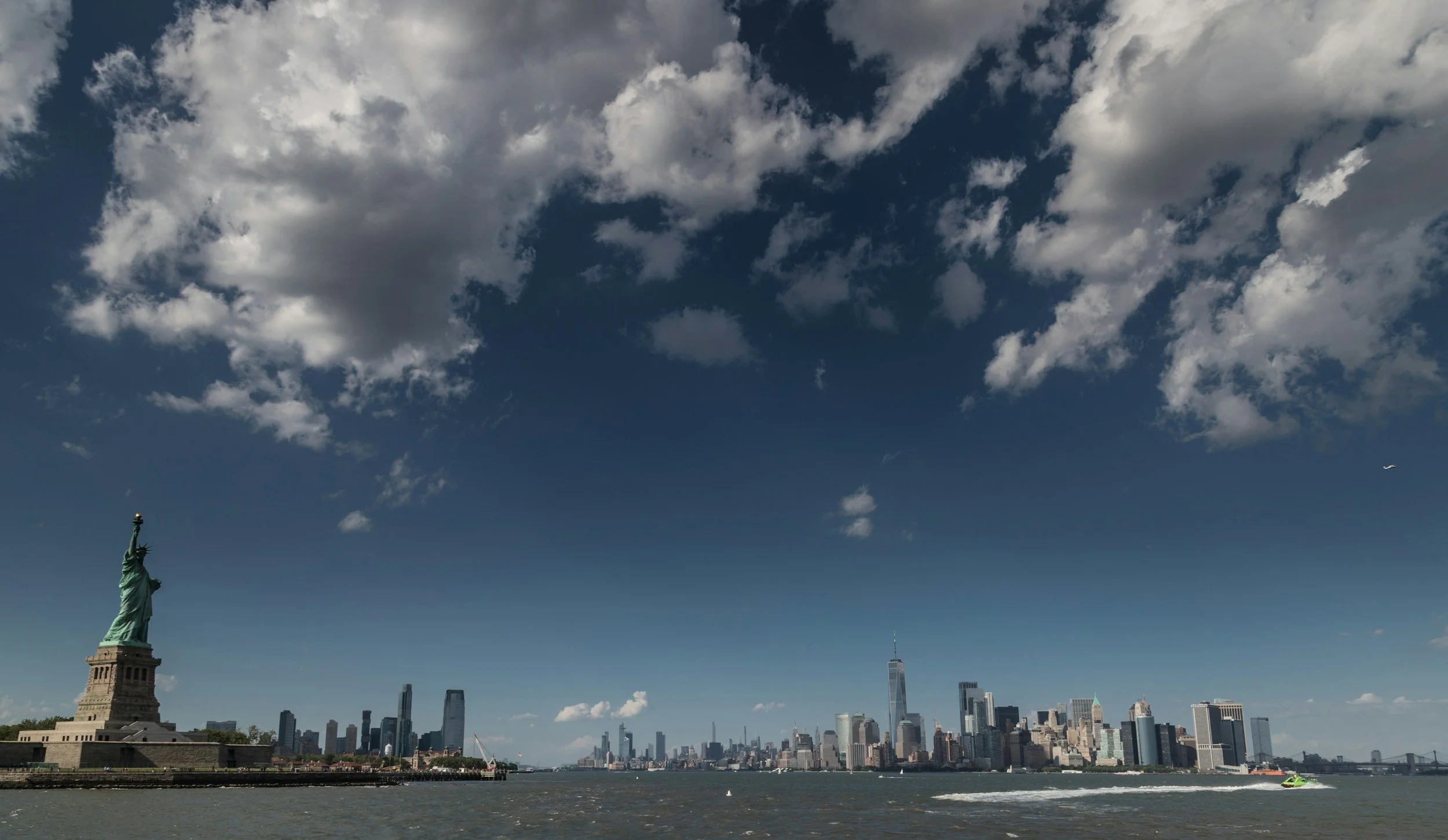
New York City Weather
Quick links
Month
Summary
January
January in New York City is typically cold and brisk, with frequent overcast skies and a strong chance of snowfall. Daytime temperatures usually remain below 40 degrees Fahrenheit, while nights dip into the upper 20s. Snowfall is common, though it may be mixed with freezing rain. Travelers should expect about 3.5 inches of precipitation, mainly in the form of snow or sleet. Pack a heavy winter coat, scarf, gloves, thermal layers, and waterproof boots.
February
February remains wintry and cold, though slightly less so than January. Average highs reach about 42 degrees Fahrenheit, with lows around 29 degrees. Snowfall is still a possibility, though it may alternate with cold rain. Precipitation totals approximately 3.1 inches. Visitors should prepare for icy sidewalks and cold winds. Bring insulated outerwear, layered clothing, winter footwear, and a hat.
March
March is a transitional month where winter slowly gives way to spring. Early in the month, snow may still fall, but by late March, milder rain showers become more common. Average temperatures rise to a high of 50 degrees and a low of 35. Precipitation reaches about 4.4 inches, mostly rain with occasional snow. Pack a warm jacket, raincoat, umbrella, and both winter and spring clothing options.
April
April brings clearer signs of spring, with budding trees and frequent rainfall. Average highs climb to 61 degrees, while lows settle near 45. Rain dominates the 4.5 inches of monthly precipitation, with occasional damp, chilly days. Travelers should pack a waterproof jacket, light sweaters, an umbrella, and comfortable shoes for walking in damp weather.
May
May is a pleasant and popular time to visit New York City. Temperatures are typically mild, ranging from a high of 71 to a low of 55 degrees. Rain is still frequent, averaging 4.0 inches for the month, though storms are often brief. Spring is in full bloom, making outdoor exploration ideal. Light layers, a compact rain jacket, and comfortable walking shoes are recommended.
June
June marks the start of summer and brings longer days and higher humidity. Average highs reach 79 degrees, with lows around 64. Rainfall increases to about 4.4 inches, often appearing in the form of afternoon thunderstorms. It’s warm but not overly hot. Visitors should pack lightweight clothing, sunscreen, a light rain jacket, and an umbrella.
July
July is typically the hottest month in the city, with average highs of 84 degrees and lows around 70. Humidity can make temperatures feel even warmer. Thunderstorms are common and rainfall averages 4.6 inches. Air conditioning is essential indoors, and streets can feel stifling. Pack breathable clothing, sun protection, and a refillable water bottle. Sandals and rain gear are also helpful.
August
August remains hot and humid, with temperatures only slightly cooler than July. Average highs hover around 82 degrees, and lows stay near 69. Thunderstorms continue to occur, with monthly precipitation around 4.4 inches. Days may feel muggy, but evenings start to cool. Bring lightweight outfits, sunblock, and something to stay dry in sudden showers.
September
September offers a welcome break from summer heat. Highs average around 75 degrees, while lows cool to 62. Humidity drops, and skies are often sunny. Rain remains at a moderate 4.3 inches, mostly in the form of short showers. It’s an excellent month for outdoor activities. Pack light jackets, layered clothing, and versatile footwear.
October
October is one of the most comfortable months for exploring the city. With average highs around 64 degrees and lows near 51, the air turns crisp, and fall foliage begins to appear. Rain averages 4.0 inches and tends to be light to moderate. Bring a warm jacket, scarves, and layers for fluctuating temperatures. Comfortable shoes are essential for fall walks.
November
November signals the start of the cold season. Highs drop to around 54 degrees, and lows settle near 42. Rain is more frequent, averaging 3.9 inches, and flurries may appear late in the month. Daylight hours shrink, and the atmosphere turns brisk. Visitors should bring a midweight coat, sweater layers, and a rain-resistant umbrella or jacket.
December
December is cold and often festive, with early signs of winter and holiday lights throughout the city. Temperatures range from a high of 44 to a low of 32 degrees. Precipitation reaches 3.9 inches, often a mix of rain and light snow. Pack a winter coat, gloves, hat, and layers to stay warm while sightseeing.
Seasonal Trends
New York experiences four distinct seasons. Winters (December to February) are cold and often snowy. Spring (March to May) brings increasing warmth, blooming trees, and showers. Summer (June to August) is hot and humid, with frequent thunderstorms. Autumn (September to November) offers mild weather, vibrant foliage, and less humidity, making it particularly pleasant.
Best Time to Visit
The best times to visit New York City are May through June and September through October. These months offer comfortable weather, fewer temperature extremes, and a mix of greenery or fall colors. Spring and fall also feature fewer crowds than the holiday season or peak summer. Outdoor events, mild temperatures, and ideal walking conditions make these the top choices for travelers.


